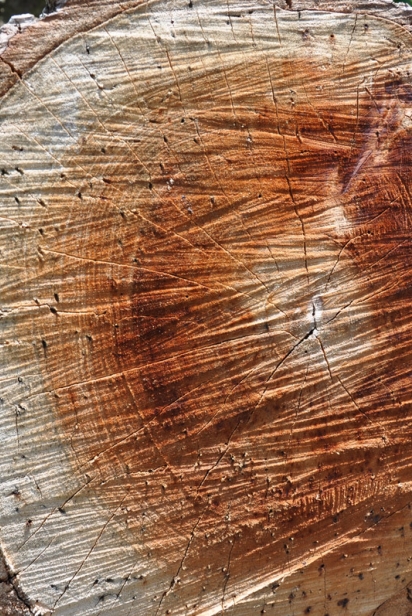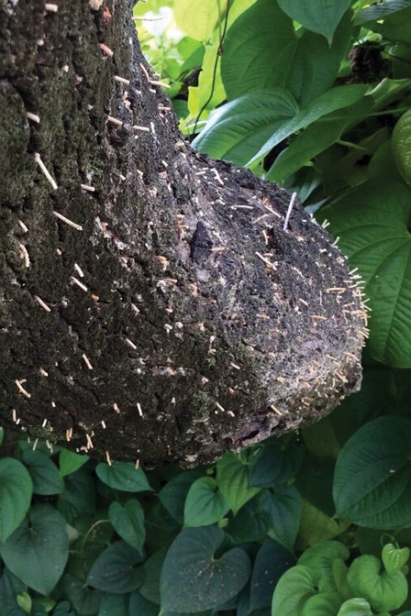Avocado Alarm: Laurel Wilt
In early 2002, somewhere near the meandering Savannah River in Georgia, a tiny female ambrosia beetle emerged from a wooden packing crate, flew inland toward a small stand of native redbay trees and began to drill. Fifteen years later, we have lost half a billion native trees and over 25,000 avocado trees to the deadly disease laurel wilt. This kills through a combination of an introduced pest, the redbay ambrosia beetle; an introduced fungus, Raffaelea lauricola; and a severe overreaction to the presence of the fungus by host plants. These include the avocado (Persea americana), a beloved South Florida fixture, and the previously indestructible native plants swampbay (Persea palustris) and redbay (Persea borbonia), all members of the laurel family. The $54 million Miami-Dade avocado industry has already lost close to 25,000 commercial avocado trees to laurel wilt or disease-related removals, while native trees have suffered even greater losses.
Signs of Laurel Wilt
The fungus itself is not deadly to the infected trees, nor is the vector. Trees die by overreacting to the presence of the fungus. Once a female ambrosia beetle drills into a suitable tree, she begins to grow the fungus to feed herself and her young. The tree overreacts and tries to wall off the fungus to protect itself. The tree does this so quickly and efficiently that it effectively cuts off its own water and nutrient supply, causing its leaves to rapidly wilt, turn brown and hang on the tree before dying.
The redbay ambrosia beetle brought laurel wilt to South Florida, but once it got here, other ambrosia beetles that were already here also began to farm the same fungus. A few of those beetles are the ones thought to be causing avocado damage. The disease can be spread by ambrosia beetles, but also through root grafting. In an avocado grove, the disease will often travel right down a row tree by tree.
Finding Disease
Drones are now used by tech-savvy growers as an aid to detect the disease. In some cases, it’s more efficient to fly over the grove with a camera attached than to walk or drive the grove. Dogs have been successfully trained by scientists at Florida International University to detect the scent of the detrimental fungus. The dogs’ noses are so sensitive that they can often detect the disease before the tree begins to show visible signs of wilt.
Signs of Laurel Wilt
- Leaves stay on the tree, turn brown, do not drop. Avocado trees dropping leaves is normal. Other tropical fruit trees are not affected by laurel wilt.
- Trunks reveal sawdust tubes, beetle holes, dark coloration in xylem. Avocado trees dropping leaves is normal.
How to Manage Laurel Wilt
If you're a commercial avocado grove owner, check out this protocol developed by UF/IFAS. The most important thing grove owners can do is to consistently scout their groves and to quickly rogue any laurel-wilt-affected tree before the disease can spread through the roots to its neighbor. Lateral root transmission is much more efficient and quick than beetle transfer.
If you’re a homeowner, keep your tree healthy through proper horticulture and don’t bring in any wood to your property that may be in the laurel family as that wood may harbor beetles. Any large, dead tree on your property is a hazard, so have it safely removed by a certified arborist.






